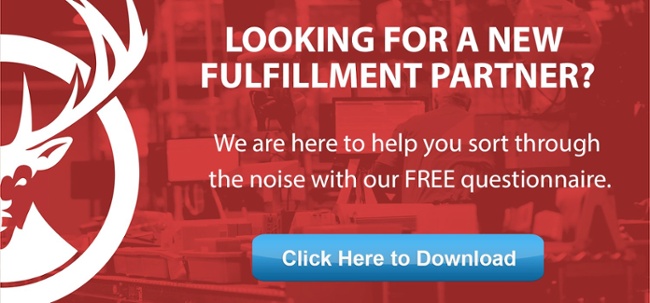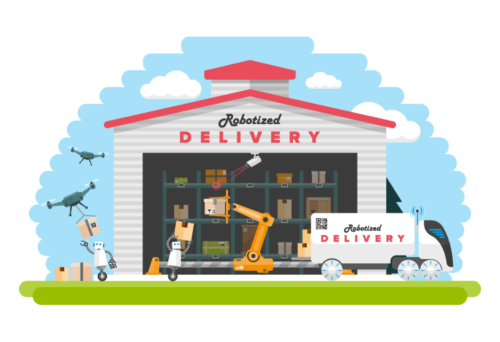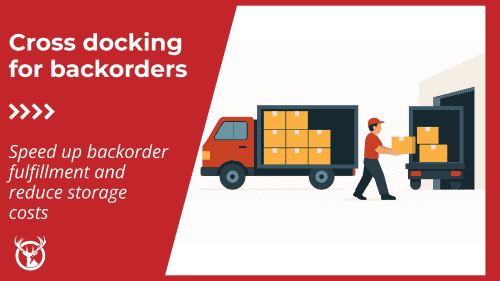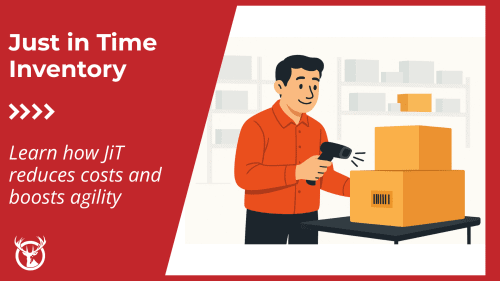Manufacturers live and breathe finished goods in their warehouse and have a variety of metrics they use to track these items, but many of those terms have started to bleed over into the eCommerce space. One of the biggest is “finished goods inventory.”
This inventory is all about what you have to store but can also sell. It’s the thing to know if you want to generate revenue, keep customers happy by filling orders, and grow your business. Inventory records should account for finished goods, because it’ll help your business succeed. The formula isn’t tough, so you’ll soon be able to understand the balance your business needs and the value that this data can bring.
Whether you’re hearing about it for the first time — or it popped up in your new WMS and you just Googled it — we’re here to help you understand this and other inventory from a warehouse and balance sheet perspective.
What is finished goods inventory?
Finished goods inventory is the stock that a manufacturer or eCommerce company has available for customers to buy. It is what is on the shelf, ready for purchase and order fulfillment. Inventory records should highlight your finished goods inventory as well as other components for the manufacturing process so you can be prepared.
The term “finished goods inventory” comes from the manufacturing world and represents the third stage of inventory:
- Raw materials: All the materials used to create a product. These are counted before a production order is issued.
- Work-in-progress inventory: Unfinished products that are being manufactured currently, after a production order. In the eCommerce space, the work-in-progress category now includes items that you only use in kits (i.e., they cannot be sold separately but are sold as a combined unit/SKU).
- Finished goods: The goods ready to be sold. Think of it as what’s on your site listed under your products.
Finished goods inventory is also separated from other items in terms of your accounting. They represent the shift from items purchased to assets. They will be counted as short-term assets in the majority of cases.
Why does finished goods inventory matter to your operations?
Your finished goods inventory represents how much stock you have that you can sell. This is important in a few distinct ways, and we’ll look at four areas where it impacts both manufacturers and eCommerce sellers.
- The available stock allows you to generate revenue, and you need to track it to ensure order fulfillment.
- Real-time inventory levels help you monitor sales and ensure you have enough lead time to manufacture replacement inventory before your stocks run out entirely. Set goods-thresholds to prevent stockouts and delays. This level should also inform you when you purchase raw materials to avoid production delays.
- Monitoring how long goods sit from when they are produced to sold and the order shipped can help you understand warehouse expenses relative to products. You know the shelf space needed, direct labor for fulfillment costs, and overall storage costs to have that inventory on hand. If you work with a 3PL like Red Stag Fulfillment, finished goods may play a role in your monthly costs.
- When you’re correctly tracking these costs, you can compare them against sales to understand gross profit relative to many metrics. This can inform your pricing, sales, marketing, and much more. Work with a 3PL that offers real-time inventory tracking to help with your analysis.
The better you can track your finished goods inventory, the more you can optimize your supply chain and inventory management. You can adjust production and purchase levels to meet demand while avoiding under- and overstocking.
For manufacturers and eCommerce companies that sell kits or subscription items, tracking these goods will help you minimize waste materials and avoid storing too much of your raw materials or having too much work-in-progress inventory.
How do I calculate finished goods inventory?
There’s a pretty straightforward way of calculating your finished goods inventory that can help you get a handle on your warehouse and production over a period of time. Your existing software should help you find the manufactured cost of goods plus track elements like your direct labor.
For the costs in our equation below, be sure that you’re using the same timeframe. Ending on different dates will make it difficult to add things up and makes the formula much more difficult.
Here’s the easiest formula to calculate finished goods inventory:
Finished Goods = (Total cost of goods manufactured – the cost of goods sold) + value of previously finished goods currently on hand
That equation shows you the current value of your inventory and is useful for your balance sheets. Depending on how your business is set up, you can set alerts based on this equation to help you avoid falling behind on your restocking.
Reviewing it often also helps you determine the profitability of goods, look for waste, and optimize your overall inventory management and spend.
A quick note on the data
It’s a promising idea to update this information and track it continually. Knowing your finished goods will help you understand storage costs for your warehousing and estimate other concerns. It puts a firmer number on revenue potential while giving you something to compare against when looking at salary, insurance, space, and even depreciation. You also face more significant risks from loss and theft as your inventory volume climbs and things sit on shelves.
While COVID-19 has made some companies reluctant to return to just-in-time supply chain efforts, calculating finished goods provides clarity into sales and inventory movement.
It’s also worth noting that you can sell more than the finished goods you have available. If you do this, it should be through clear backorder channels so that customers know what to expect. To support that, you need robust software to track inventory across all production and fulfillment locations or a smart partner who can manage that for you.
What’s the ideal finished goods inventory?
There’s no magic number to set your dial to so that you can walk away and let the business run itself. Inventory levels are dynamic, especially in the world of eCommerce. Product categories differ wildly in inventory requirements, even when they have the same customer base.
What you’ll want to do is to find an inventory count that lets you fill orders as you receive them, without burning through cash on storage and direct labor. It’ll fluctuate with the seasons and many other factors.
It can be hard to track. If you need a hand, Red Stag Fulfillment can point you in the right direction. We help eCommerce companies of all sizes find ideal fulfillment solutions. Follow us on social for suggestions, use the Contact form at the top of the page for a conversation. You need a 3PL partner that specializes in your product area, size, volume, or other needs, and we are here to help.











